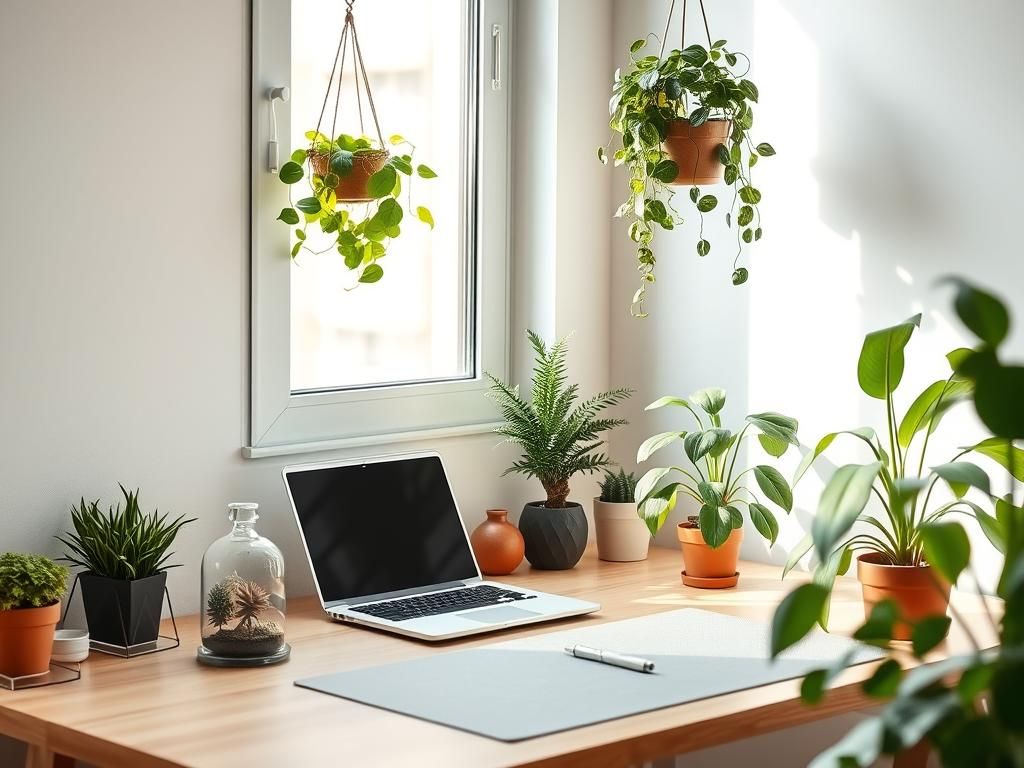Biophilic design connects humans with nature through intentional space planning. It’s not just about aesthetics—incorporating natural elements into your home workspace can boost productivity by 15%, reduce stress, and enhance creativity. Since the pandemic shifted millions to remote work, our home environments have become crucial to our daily performance and wellbeing.
The good news? You don’t need a full renovation to transform your workspace. These 7 biophilic design tweaks take under 2 hours to implement but deliver immediate benefits to your work-from-home experience. Let’s bring the outdoors in and create a workspace that helps you thrive.
Quick Stats: The Science Behind Biophilic Design
-
NASA’s Clean Air Study found that certain indoor plants can remove up to 87% of air toxins within 24 hours
-
78% of remote workers report better focus and concentration with access to natural light
-
Exposure to natural elements can reduce cortisol levels by up to 60%
-
Workers with views of nature handle tasks with 15% higher accuracy
🌿 Tweak #1: Strategic Plant Positioning
Screen fatigue is real. Staring at digital devices for hours strains your eyes and depletes mental energy. Plants provide visual microbreaks that allow your eyes to adjust and reset, reducing fatigue and headaches.
Implementation Steps:
-
Position a small plant (3-5 inches tall) within your peripheral vision, about 20 inches from your screen
-
Add a medium floor plant (2-3 feet tall) diagonally behind your workspace
-
Include a hanging plant that creates gentle movement with air circulation
-
Ensure plants don’t block natural light sources
Budget-friendly option: Create a desktop terrarium using a repurposed glass jar ($0), small succulents ($5), and pebbles from your yard. Total cost: under $10.
Pro Tip: Choose plants with different leaf shapes and textures. This variety stimulates more neural pathways than uniform greenery, enhancing the cognitive benefits.
☀️ Tweak #2: Natural Light Optimization
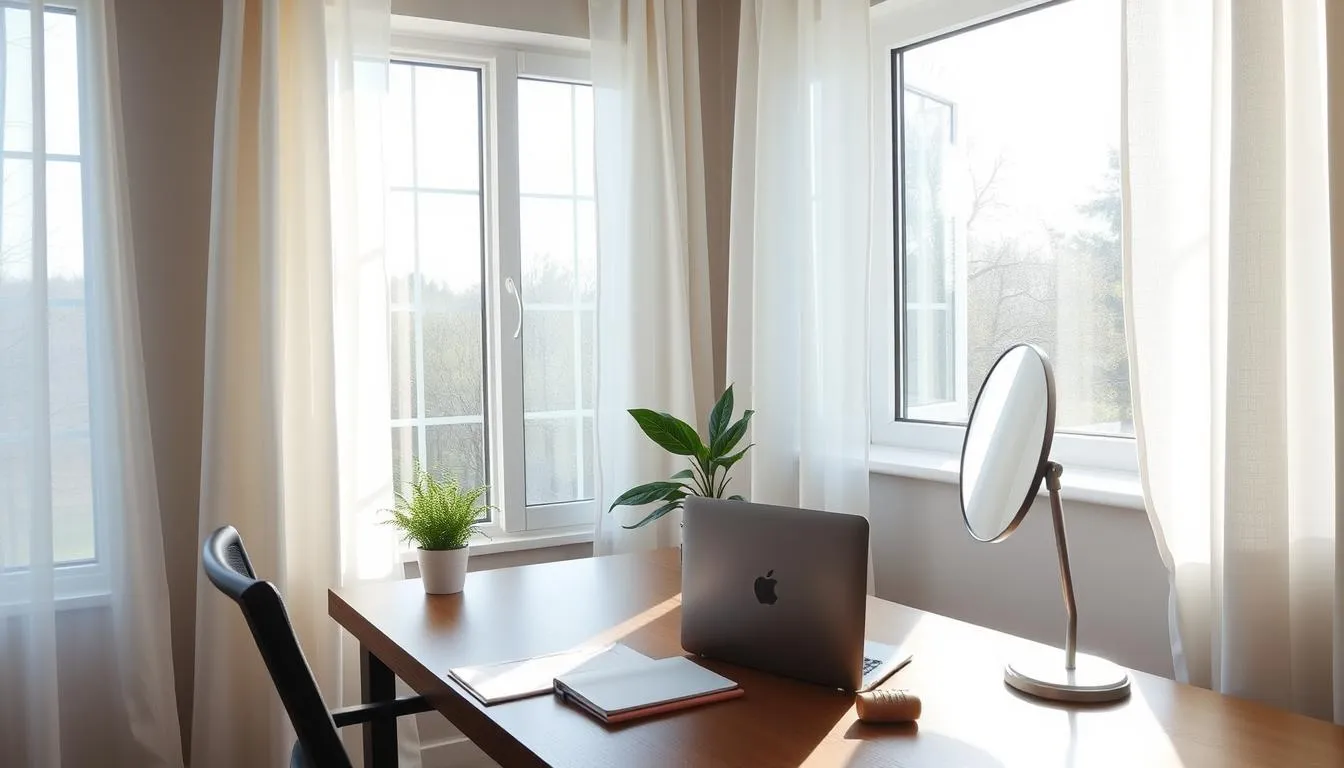
Poor lighting causes eye strain, headaches, and decreased alertness. Natural light regulates your circadian rhythm, improves mood, and increases vitamin D production—all crucial for sustained focus and energy throughout the workday.
Implementation Steps:
-
Position your desk perpendicular to windows (not facing or backing) to minimize glare
-
Install light-filtering curtains that diffuse harsh direct sunlight
-
Use a small desk mirror to reflect additional light into darker corners
-
Remove obstacles blocking window light (stacked books, equipment)
Budget-friendly option: Repurpose a makeup mirror as a light reflector ($0) and use a white sheet as a light-diffusing window covering ($5). Total cost: $5.
Pro Tip: If natural light is limited, use full-spectrum bulbs (5000-6500K) that mimic daylight in desk lamps. They’re more effective than standard bulbs for reducing eye strain.
🌊 Tweak #3: Water Element Integration
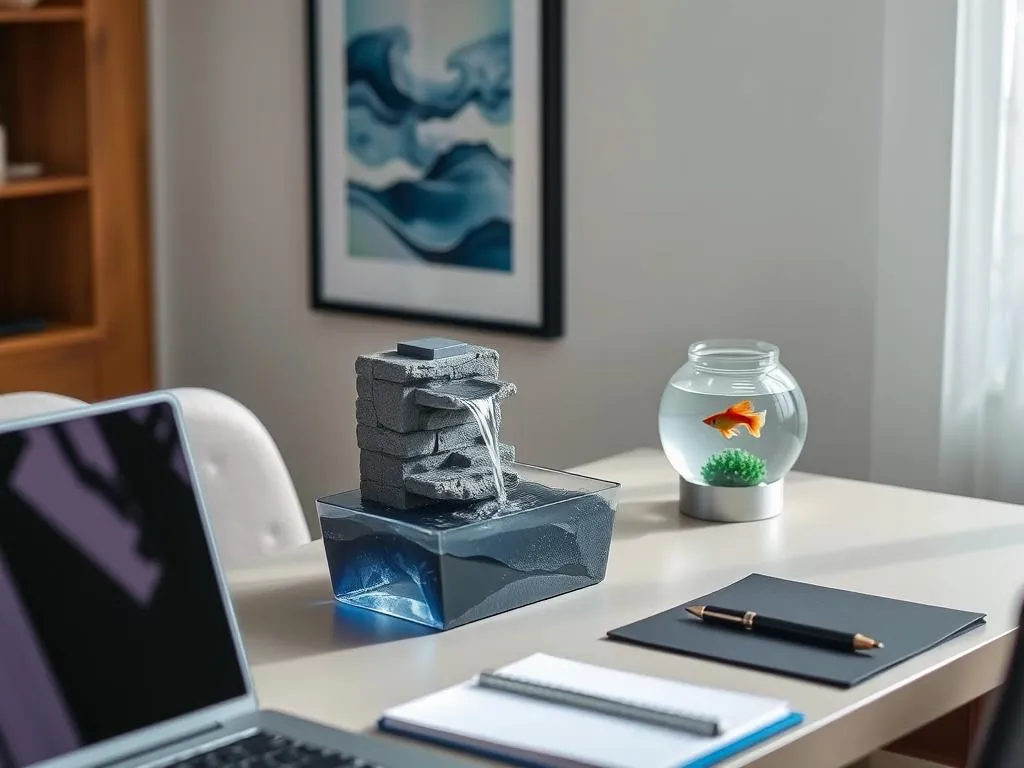
The constant ping of notifications and household noise creates mental fragmentation and stress. Water elements produce white noise that masks distractions while providing rhythmic sounds that induce a state of flow and concentration.
Implementation Steps:
-
Add a small desktop water fountain within peripheral vision
-
Position a small fish bowl or water feature at least 20 inches from electronics
-
Hang water-inspired artwork in your line of sight
-
Use a water sounds playlist if physical water elements aren’t practical
Budget-friendly option: Create a mini zen fountain using a shallow dish ($2), small pump ($8), and smooth stones from your yard. Total cost: $10.
Pro Tip: Choose water features with adjustable flow rates so you can increase the sound during high-distraction periods and decrease it during video calls.
“Biophilia isn’t about decor – it’s creating neurological harmony. When we integrate natural elements into workspaces, we’re not just designing for aesthetics, we’re designing for the way human brains have evolved to function optimally over thousands of years.”
— Emma Richardson, Biophilic Interior Designer
🪵 Tweak #4: Natural Material Touchpoints

Plastic and metal surfaces create static, feel cold to the touch, and lack sensory variation. Natural materials provide tactile comfort, temperature regulation, and subtle texture variations that enhance sensory awareness and reduce stress.
Implementation Steps:
-
Replace plastic desk accessories with wooden or bamboo alternatives
-
Add a cork or wooden mouse pad and keyboard wrist rest
-
Use a natural fiber desk mat (jute, cotton, wool)
-
Switch to wooden or stone coasters for drinks
Budget-friendly option: Repurpose cutting boards as desk organizers ($0) and use wine corks to create a custom mouse pad ($3 for cork sheet). Total cost: $3.
Pro Tip: Lightly sand wooden touchpoints and treat with food-grade mineral oil to enhance the tactile experience and bring out natural grain patterns.
🎨 Tweak #5: Nature-Inspired Color Palette
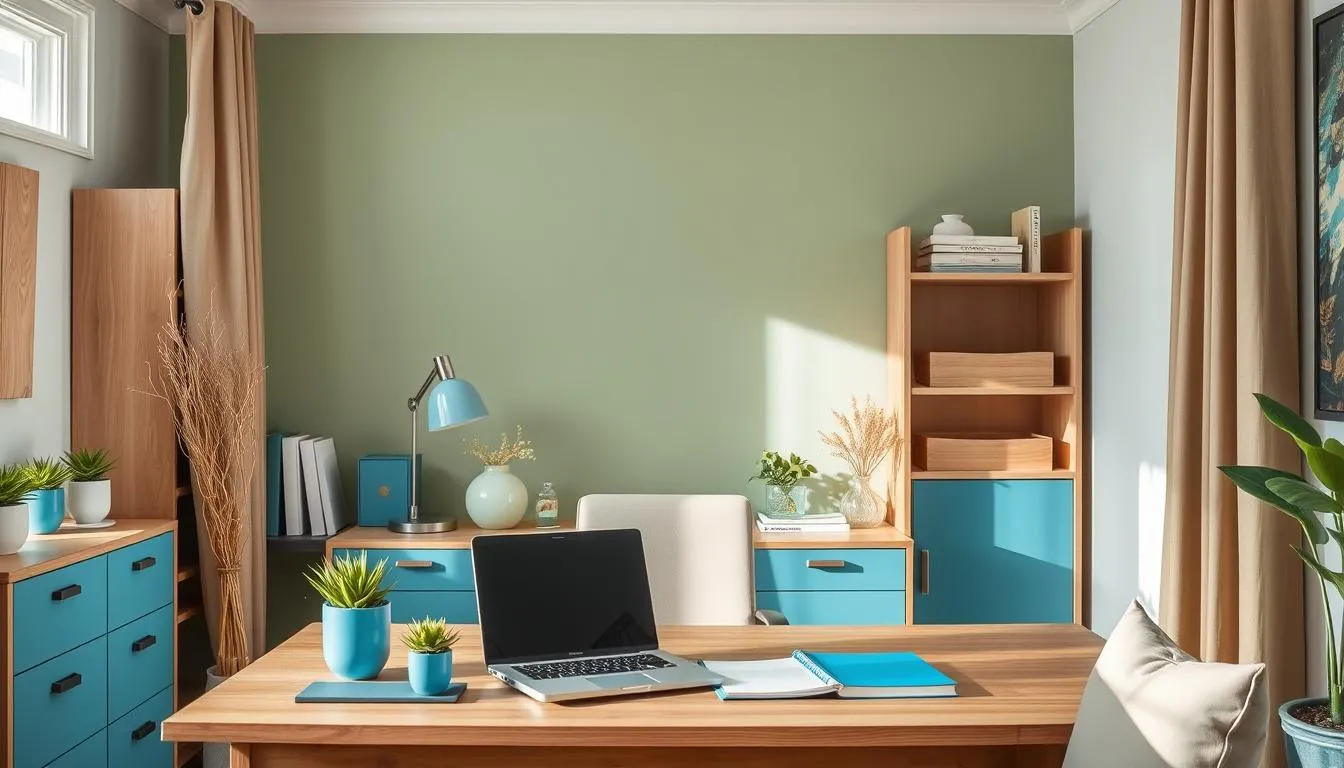
Harsh, synthetic colors create visual tension and can trigger stress responses. Nature-inspired colors—like blues, greens, and earth tones—have been shown to lower blood pressure, reduce eye strain, and create psychological comfort.
Implementation Steps:
-
Add a small area rug in earth tones or botanical patterns
-
Replace bright desk accessories with items in forest greens, ocean blues, or sandy neutrals
-
Use removable wallpaper or large fabric panels for an accent wall
-
Incorporate natural color through textiles (cushions, throws)
Budget-friendly option: Dye existing cotton desk accessories using natural dyes like turmeric (yellow), tea (brown), or spinach (green). Total cost: $5.
Pro Tip: Layer different shades of the same color family to create depth and visual interest without overwhelming the space—just as nature creates variations in a forest or beach landscape.
🌬️ Tweak #6: Air Quality Enhancement
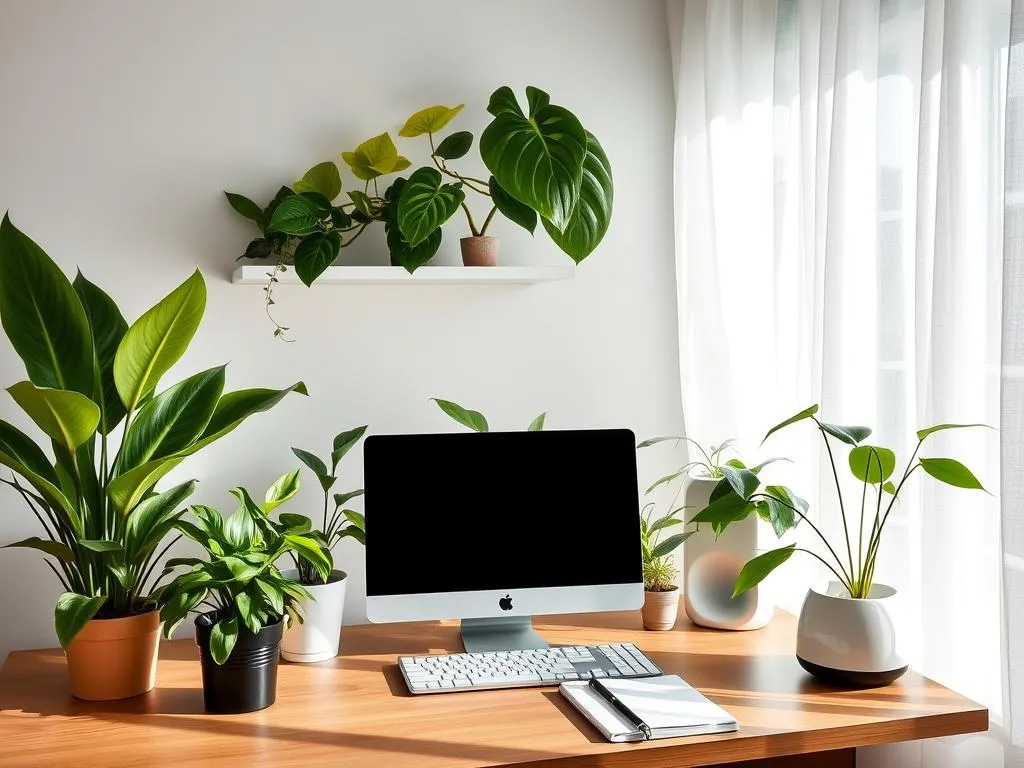
Poor air quality leads to headaches, fatigue, and reduced cognitive function. Indoor air is often 2-5 times more polluted than outdoor air. Proper ventilation and air-purifying elements improve oxygen levels, remove toxins, and enhance mental clarity.
Implementation Steps:
-
Add 2-3 air-purifying plants (snake plants, peace lilies, spider plants)
-
Position a small desktop air purifier near your workspace
-
Create cross-ventilation with strategic window/door positioning
-
Use essential oil diffusers with forest scents (pine, cedar, eucalyptus)
Budget-friendly option: Make a natural air purifier by placing activated charcoal ($4) in a decorative bowl with a few drops of essential oil ($3). Total cost: $7.
Pro Tip: Create a “breathing zone” by clustering air-purifying plants within a 3-foot radius of where you sit. This creates a microclimate of cleaner air directly in your breathing space.
🔊 Tweak #7: Natural Soundscape Creation
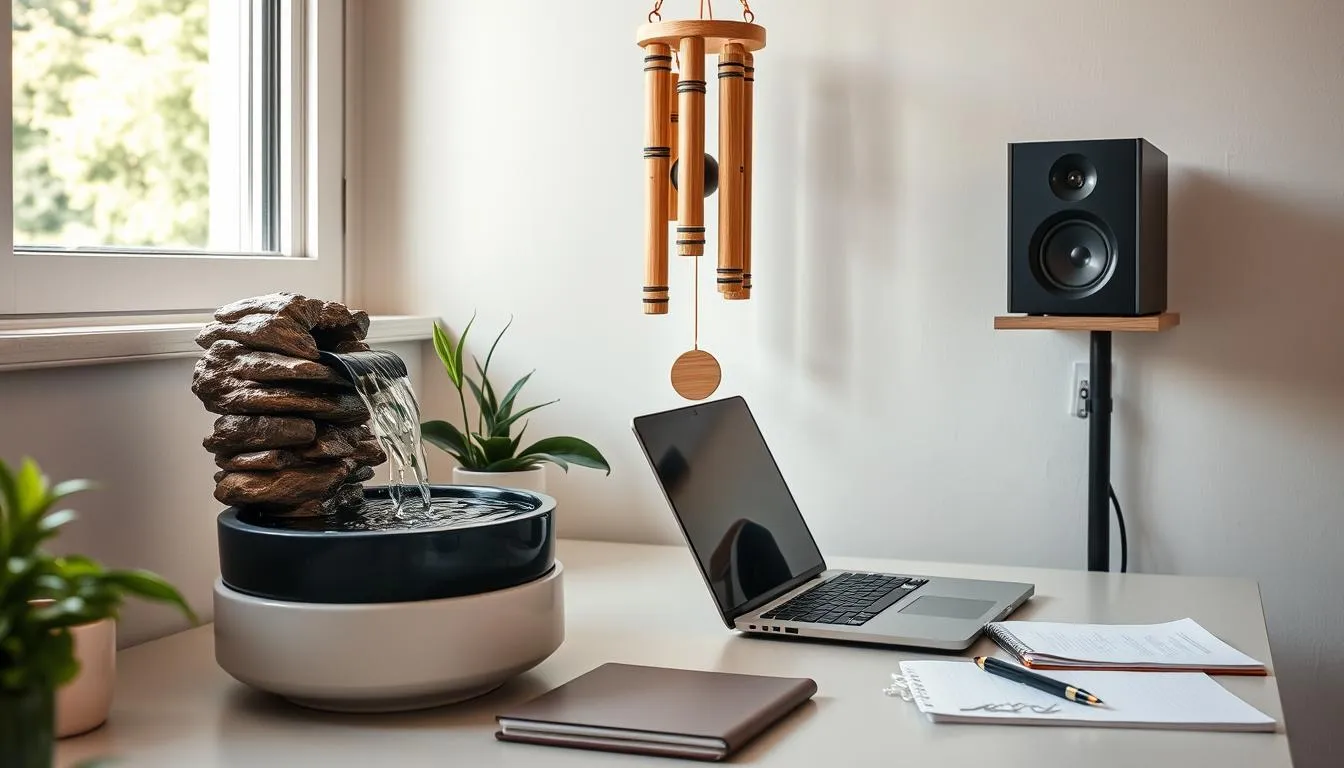
Artificial sounds and silence can both increase stress and reduce focus. Natural soundscapes have been shown to improve concentration by 12%, enhance problem-solving abilities, and reduce stress hormones in the bloodstream.
Implementation Steps:
-
Add a small desktop fountain for gentle water sounds
-
Hang wind chimes near a window for occasional natural tones
-
Use a dedicated speaker for nature sounds (rainfall, forest ambiance)
-
Position bird feeders outside windows to attract natural wildlife sounds
Budget-friendly option: Create a rain stick from a cardboard tube ($0), toothpicks ($1), and dried beans ($1). Total cost: $2.
Pro Tip: Match your soundscape to your task—water sounds for focused work, bird songs for creative tasks, and forest ambiance for reading or learning new information.
Bringing Biophilic Design to Your Workspace: Simple Steps, Profound Impact
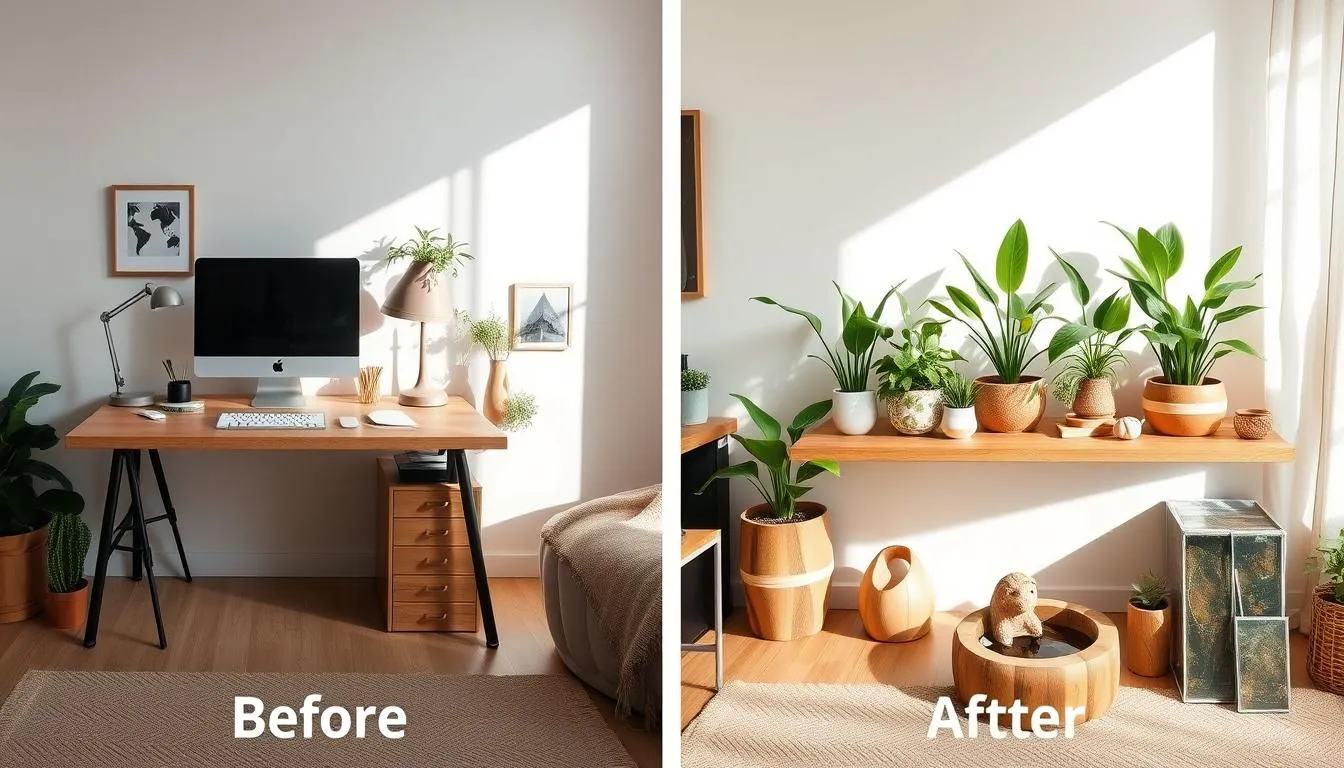
These seven biophilic design tweaks for your home workspace are more than decorative changes—they’re strategic environmental adjustments that align with how your brain naturally functions best. The beauty is in their simplicity: each can be implemented in under two hours, often with items you already have or can acquire inexpensively.
Remember that biophilic design is about creating a connection to nature that works for you. Start with one or two tweaks that address your most pressing workspace challenges, then gradually incorporate others as you observe their impact on your productivity and wellbeing.
Have you implemented any of these biophilic design tweaks in your home workspace? We’d love to see your transformations! Tag @GreenWorkspaceInspo on Instagram to share your before-and-after photos and join our community of nature-inspired remote workers.
Useful Resources
For additional insights, check out these valuable resources:
- productivity strategies - Asana
- workflow optimization - Zapier
- productivity methods - Todoist
- project management tips - Trello
- workspace organization - Notion
